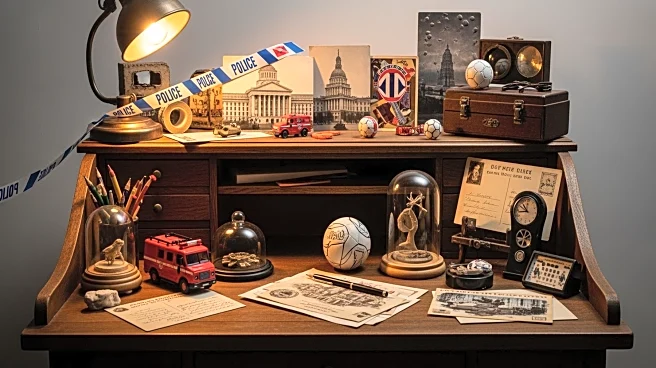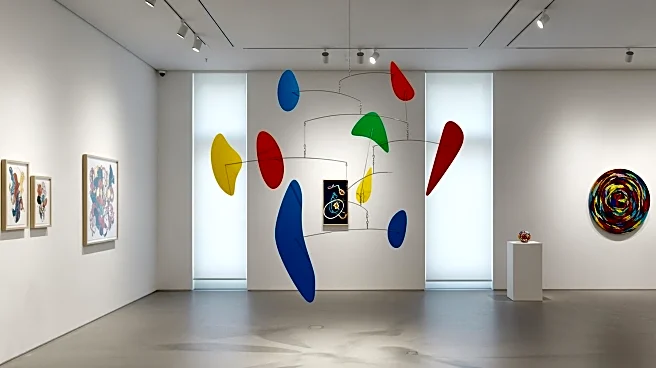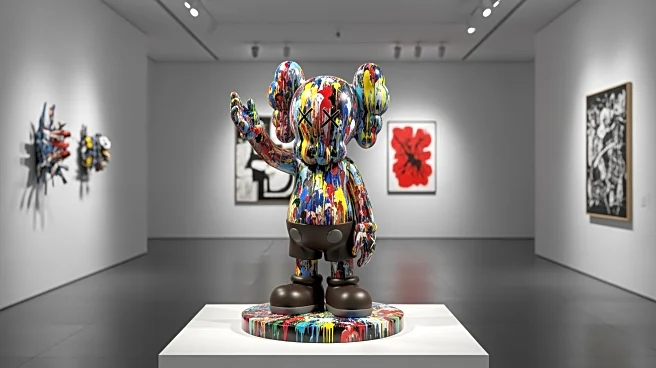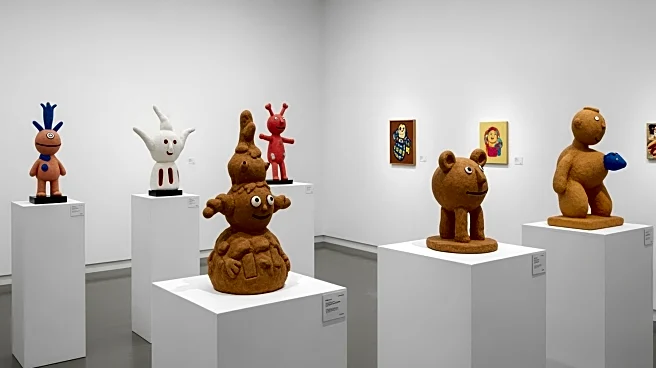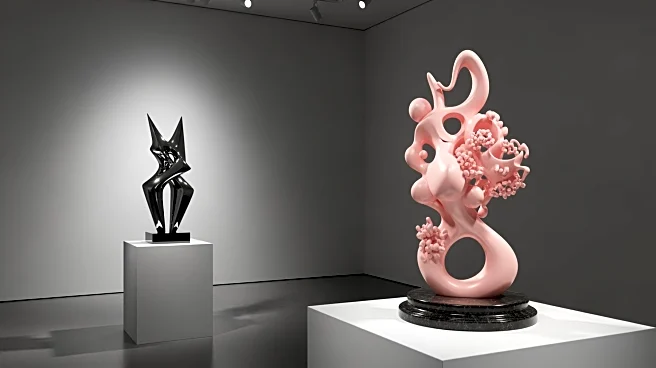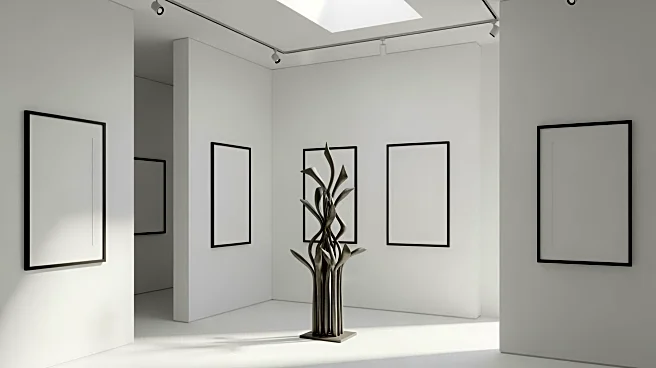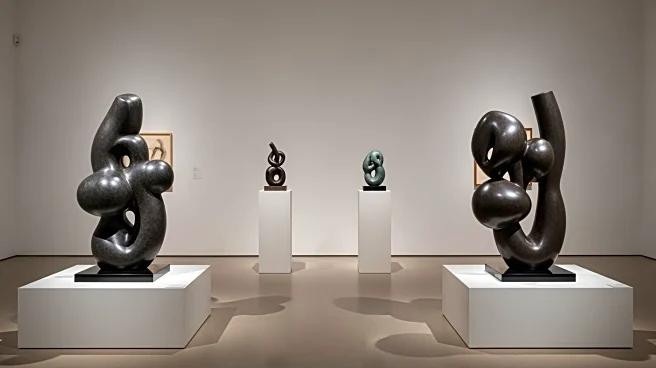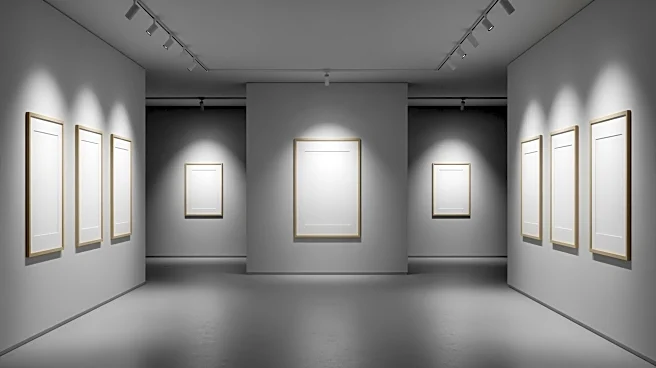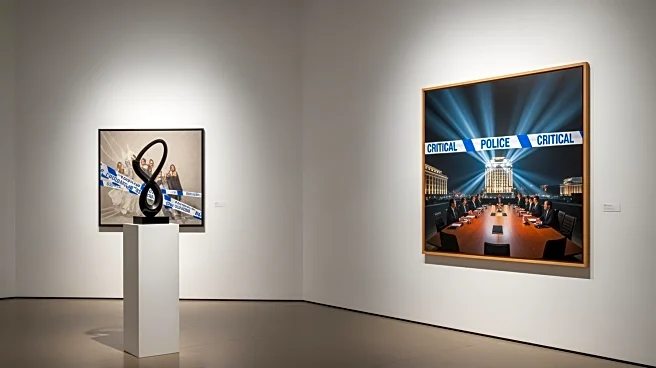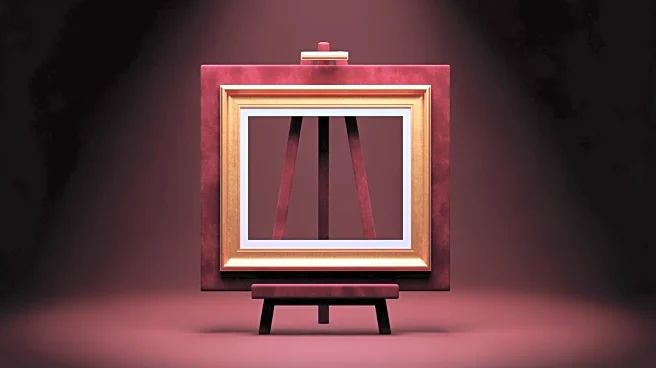What's Happening?
Film director Wes Anderson, known for his stylized and antiquated cinematic worlds, is collaborating with Jasper Sharp, curator of modern and contemporary art at the Kunsthistorisches Museum in Vienna,
to recreate the studio of 20th-century artist Joseph Cornell. The exhibition will be held at Gagosian in Paris, showcasing Cornell's unique assemblages and shadow boxes. Cornell, who was a recluse, created his art using found objects, often with surreal effects, and his studio was a hub for radical ideas that pre-empted movements like Neo-Dada and Pop Art. Anderson and Sharp's reconstruction is based on surviving photographs and includes objects borrowed from the Smithsonian American Art Museum, as well as items sourced from markets in Paris and New York.
Why It's Important?
The recreation of Joseph Cornell's studio by Wes Anderson and Jasper Sharp is significant as it offers a rare glimpse into the creative process of an artist who influenced many postmodern movements. Cornell's work, often seen as whimsical, is revealed to be substantive and influential, impacting artists like Marcel Duchamp and Andy Warhol. This exhibition not only celebrates Cornell's legacy but also highlights the enduring impact of his artistic approach on contemporary creatives. By bringing Cornell's studio to Paris, a city that held personal significance for him, the exhibition bridges historical and cultural gaps, enriching the understanding of his work and its context.
What's Next?
The exhibition, titled 'The House on Utopia Parkway: Joseph Cornell’s Studio Reimagined by Wes Anderson,' will be open to the public at Gagosian in Paris from December 16, 2025, to March 14, 2026. It is expected to attract art enthusiasts and scholars interested in Cornell's work and its influence on modern art. The installation aims to capture the atmosphere of Cornell's studio, offering visitors an immersive experience. As the exhibition progresses, it may spark renewed interest in Cornell's art and inspire further exploration of his techniques and themes in contemporary art circles.
Beyond the Headlines
The exhibition not only showcases Cornell's artistic legacy but also raises questions about the nature of creativity and the role of the artist's environment in shaping their work. By recreating Cornell's studio, Anderson and Sharp invite viewers to consider the intimate relationship between an artist and their workspace, and how this influences their creative output. The project also underscores the importance of preserving and interpreting historical art practices, offering insights into the cultural and personal dimensions of Cornell's work.
